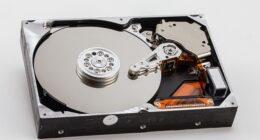The kernel is responsible for managing hardware resources, allocating memory, and running processes on the CPU. On the other hand, the OS provides a user-friendly interface and manages various software applications installed on your device. It’s worth noting that while Linux has a separate kernel and OS, Windows does not follow this model. Instead, it includes its kernel as part of its operating system.
What is the kernel?
The kernel is the core of an operating system that manages all hardware and software resources. It acts as a bridge between the computer’s hardware and software applications, making it an essential component of any modern computing device.
The kernel performs critical tasks such as memory management, process scheduling, I/O (input/output) management, and security enforcement. It ensures that each application has access to the appropriate resources while preventing unauthorized access or interference from other processes.
In essence, the kernel provides a layer of abstraction between programs and hardware devices. This means that programmers do not need to worry about low-level details when writing code for their applications – they can rely on the kernel to handle these tasks in a transparent manner.
Since different types of computers have varying architectural designs, there are different kinds of kernels available. These include monolithic kernels, microkernels, exokernels, hybrid kernels and nanokernels. Each type has unique features tailored towards specific use cases.
Understanding what a kernel is can help you better appreciate how your computer works under-the-hood!
What is the OS?
(Image by 200 Degrees from Pixabay )

An operating system, commonly known as an OS, is a crucial piece of software that enables communication between a computer’s hardware and its applications. It acts as the intermediary between the physical resources of your device and the programs you use on it. The most common types of operating systems are Windows, macOS, and Linux.
The OS manages all aspects of data management including storage allocation, file access permissions and memory usage. It also handles user interaction through Graphical User Interfaces (GUIs) such as taskbars or start menus which provide easy navigation to different features installed on your computer.
In addition to this core functionality, modern OSes come with built-in security measures like firewalls and antivirus software that protect against malware attacks. These security protocols ensure that users can safely store their personal information without fear of theft or corruption.
One interesting aspect about operating systems is their ability to run virtual machines within them using specialized hypervisor software. This means that one physical machine can host multiple virtual instances running completely different operating systems simultaneously – allowing developers to test new code or run legacy applications in a safe environment.
While often overlooked by end-users who just want their devices to work seamlessly; the importance of an efficient and secure operating system cannot be overemphasized for any computing ecosystem today.
Kernel Vs. OS – Key differences
The kernel and the operating system (OS) are two distinct but interconnected parts of a computer’s software. The kernel is the core component that manages hardware resources such as memory, CPU, and I/O devices. It provides low-level services to the rest of the OS and applications running on top of it.
On the other hand, an operating system includes not only the kernel but also various other pieces of software that help manage tasks such as file systems, network protocols, security mechanisms, graphical user interfaces (GUIs), and more.
The key difference between a kernel and an OS is that while a kernel provides basic services required for all programs to run on a computer, an OS offers higher-level services needed for specific applications or use cases. In simple terms, a kernel can be thought of as the engine that powers your car while an OS acts like your car’s dashboard – providing useful information about your vehicle’s status.
Another important distinction between these two components is their level of abstraction. A kernel operates at a lower level than most other parts of an OS; it directly interacts with hardware components whereas much of what happens in an operating system takes place at higher levels where users interact with software through GUIs or command-line interfaces.
Although closely related, there are significant differences between kernels and operating systems in terms of their roles within computer systems. Understanding these differences can help us appreciate how our computers work behind-the-scenes so we can make informed decisions when choosing which technologies to use in our daily computing activities!
How the kernel and the OS work together?
The kernel and the OS are two distinct but interconnected layers of a computer’s operating system. The kernel is the core component that manages memory, processes, and hardware resources. On the other hand, the OS provides an interface between users and applications.
The kernel interacts with hardware devices such as CPU, RAM, hard drives and network cards directly to manage all their operations efficiently. It creates a bridge between software programs running on top of it and hardware components underneath it.
The OS layer sits above the kernel layer in a hierarchical fashion by taking care of user interfaces like desktop environments, file systems management protocols for storage devices like HDDs or SSDs among others. Its duties include managing user accounts and permissions as well as supporting multi-tasking capabilities.
To achieve full functionality of an operating system both layers must work together seamlessly since they complement each other in operation. In essence, without one or both layers working properly then software applications will not function effectively because they rely on these two important components to operate correctly.
Understanding how the kernel and OS work together is vital for anyone interested in gaining knowledge about how computers work at their most fundamental level.
Is Linux kernel same as OS?
(Photo by Gabriel Heinzer on Unsplash )

Linux is an open-source operating system that uses the Linux kernel. The kernel is the core of the operating system that interacts with hardware and manages resources such as memory, CPU, and input/output operations. It acts as a bridge between software applications and computer hardware.
While Linux kernel plays a vital role in running the operating system, it’s not equal to it. An OS includes additional components like libraries, user interface, utilities to manage files or packages etc., which create an environment for users to interact with their devices efficiently.
Linux distributions package together both the OS layers (user space) and Kernel into one bundle. When you install a distribution on your device, you get access to all these pre-installed tools that make up the entire operating system.
Though Linux has its own unique Kernel codebase written by Linus Torvalds early in 1991 – which was later adopted by many other developers – this does not mean that they are interchangeable concepts.
What are 5 kernel types?
There are different types of kernels, each with its unique characteristics and functionalities. Here are five kernel types:
- Monolithic Kernel – This is the most common type of kernel used in operating systems, such as Linux and Unix. It runs all services in a single address space, making it faster and more efficient.
- Microkernel – In contrast to the monolithic kernel, microkernels provide only essential services while other functions run as separate processes outside the kernel’s address space. This makes them less prone to crashes but also slower.
- Hybrid Kernel – A hybrid kernel combines elements of both monolithic and microkernel designs by providing some essential services within the same address space while others operate outside it.
- Exokernel – An exokernel exposes more hardware resources than traditional kernels do so that applications can make better use of them without sacrificing security or stability.
- Nanokernel – A nanokernel provides only basic abstractions for inter-process communication (IPC) and memory management; everything else is left up to user-level modules or libraries called servers.
Each type has its advantages and disadvantages depending on what kind of system you need to build or how much control you want over your hardware resources. Understanding these differences will help you choose which one best suits your needs when developing an OS or modifying an existing one
What is BIOS?
BIOS stands for Basic Input/Output System. It is a firmware that initializes the hardware components of a computer system during the booting process. The BIOS performs some crucial tasks, such as checking and configuring hardware devices like the hard drive, RAM, and keyboard before loading up an operating system.
The BIOS chip contains instructions on how to perform these essential operations. When you turn your computer on, it starts executing instructions stored in its ROM (Read-Only Memory) chip. These are low-level software programs designed to communicate with various hardware components connected to your PC’s motherboard.
Some newer computers use UEFI (Unified Extensible Firmware Interface) firmware instead of traditional BIOS firmware. However, both serve similar purposes and perform similar functions during startup.
While often overlooked by most users today since modern operating systems handle many of its duties automatically behind-the-scenes at boot time; familiarity with BIOS will be useful when troubleshooting or upgrading older PCs still using legacy hardware interfaces reliant upon this critical piece of code running correctly within their machines’ internal memory chips!
Featured Image By – 200 Degrees from Pixabay








